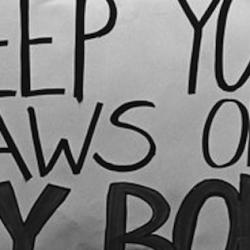Jenson observes that “Israel knew itself as created by God’s word, in the exact sense in which we until recently spoke of ‘a gentleman’s word.’ Yahweh made a promise and kept it, and just so Israel came to be.” Other nations could boast of “a visible and tangible presence of God in holy images and places,” but Israel boasted only in “God’s utterance.” Israel knew “a time when Israel had been Israel only by this word, without security, when her whole experience had been hope” (Triune Identity, 36-37).
This, he argues, highlights the significance of the second commandment, which, he points out, “follows hard on the first.” The connection between the two means “any god of whom an image can be made is merely thereby shown to be another god than Israel’s” (37).
And the reason for that is revealed in the third commandment’s stress on Yahweh’s name: “God has revealed his name, and the temptation to misuse this revelation must be resisted. But whereas God’s name may be misused, his image is always misused. For with the name we address God, and just so give ourselves over to his freedom. The statue or picture, on the other hand, is our object, which we put where we choose; and if the promises of God are guaranteed by the presence of this object, then the past revelation that gave us the object puts the promised future in our control. Just this attempt at control is the confusion of Yahweh with other gods,” the confusion that Israel fell into with their “objectification of God’s presence, the temple” (37).
The prohibition of images thus reinforces the difference of Yahweh and other gods with regard to the future. For Jenson, it highlights the fact that God’s eternity is not persistence from the past but faithfulness for the future.















